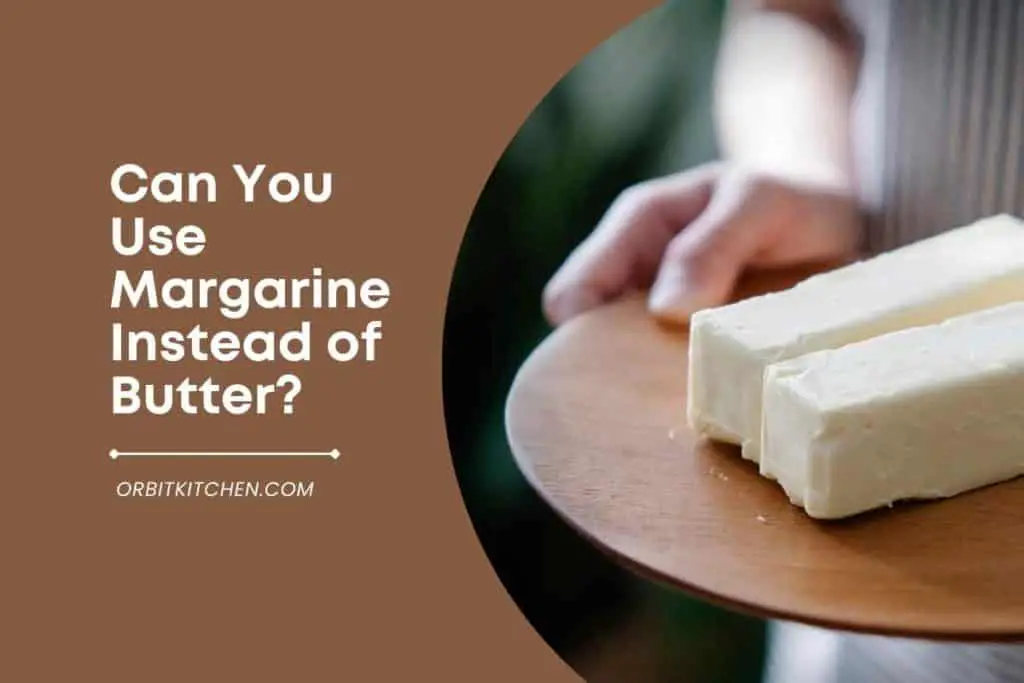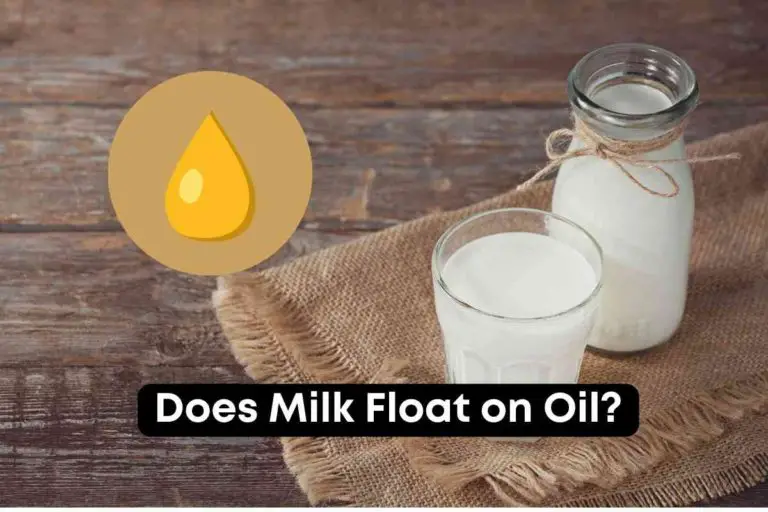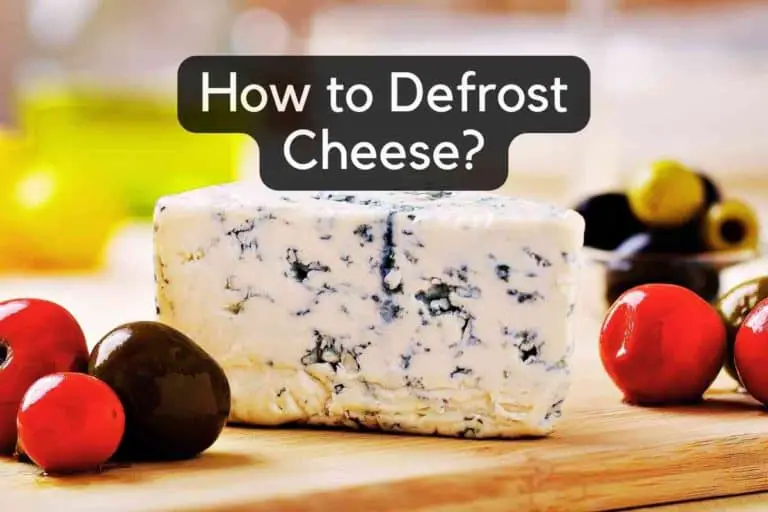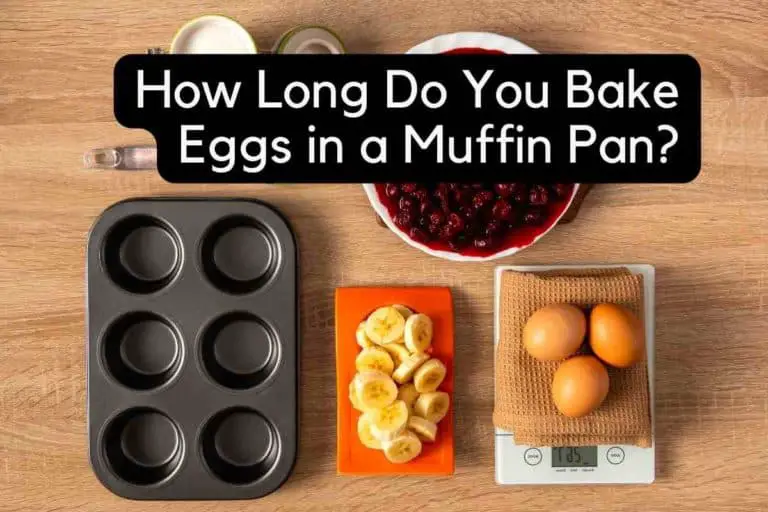Can You Use Margarine Instead of Butter?
Do you ever wonder if it’s okay to swap the regular butter in your kitchen with a healthier version such as margarine? Getting rid of butter in favor of margarine will improve your overall health and your food’s taste.
Can you use margarine instead of butter?
Yes, you can use margarine instead of butter in most recipes. It is usually lower in saturated fat than butter and has a neutral flavor. Margarine can be used as a butter substitute, but it will not produce the same results. Because it is made from vegetable oils, it will not create the same flakiness or flavor as butter.
In this guide, we’ll discuss how to use margarine instead of butter for cooking. We will also tell you what health benefits margarine can give you, so keep reading.

What Is Margarine?
Margarine is a type of spreadable, solid fat made from vegetable oils. It is usually white or pale yellow in color and has a smooth, creamy texture.
Margarine is used in place of butter in many recipes and can also be used as a spread on bread and other foods.
Difference Between Margarine and Butter
Butter is a dairy product made from cream, while margarine is a spreadable foodstuff made from vegetable oils.
Both butter and margarine are used as spreads and in cooking, but margarine is usually used in baking because it has a higher melting point than butter.
Also, margarine contains trans fats. When you buy margarine, you are paying for something that has been chemically altered.
So while you may think using this product will benefit your diet, it won’t do you much good. Trans fats are unsaturated fats that have been chemically altered to be more solid and stable.
This process, called partial hydrogenation, makes the fat less likely to spoil and extends the shelf life of products that contain it.
Trans fats are found in many processed foods, such as:
- Baked goods (cookies, crackers, cakes, pastries)
- Fried foods (French fries, fried chicken, chicken nuggets, breaded fish)
- Snack foods (chips, crackers, popcorn, margarine)
In general, 100 g of margarine contains 15 g of trans fats. Trans fats increase the low-density lipoprotein (LDL) cholesterol, the “bad” cholesterol in the blood.
LDL cholesterol contributes to the buildup of plaque in the arteries, which can lead to heart disease.
Butter is a healthy food that contains high saturated fats. It can be used in many different ways. There are actually two kinds of butter.
One kind comes from cows, while the other comes from goats. Both of these foods have very similar nutritional profiles.
What Are the Health Benefits of Margarine?
There are a few health benefits associated with margarine, including the fact that it is lower in saturated fat than butter and contains plant-based oils that can help lower cholesterol levels.
Margarine is a type of spreadable fat made from vegetable oils. It is a common ingredient in many processed foods. Some brands of margarine are fortified with vitamins and minerals.
Margarine is a good source of monounsaturated and polyunsaturated fats, which can help to lower cholesterol levels and reduce the risk of heart disease.
Why Should You Use Margarine Instead of Butter?
There are a few reasons why you might want to use margarine instead of butter. Margarine is lower in saturated fat than butter, which is better for your heart health. Margarine also usually costs less than butter.
Margarine has less saturated fat and cholesterol than butter. Butter contains about 80 percent saturated fat, while most margarine contains half that amount or less.
Saturated fat raises your LDL cholesterol (“bad” cholesterol), increasing your heart disease and stroke risk.
How to Use Margarine Instead of Butter?
It’s straightforward to substitute margarine for butter. To make your food healthier, you should consider using margarine.
You don’t have to worry about the taste of margarine. You can simply add it to whatever recipe you want. While margarine may not provide the same flavor as butter, it can be used as a butter substitute in many recipes.
You can use margarine instead of butter in baking, but it may affect the taste and texture of your finished food.
When using margarine instead of butter, it is essential to use margarine made from 100% vegetable oil to avoid the trans fat in some brands of margarine. Most margarine can be used in a 1:1 ratio when substituting for butter.
Tips for Using Margarine
Here are a few tips for using margarine:
- Choose margarine that is low in saturated fat and contains no trans fat.
- Use margarine in place of butter when baking.
- Use margarine to sauté vegetables or fish.
- You can use margarine in place of mayonnaise or salad dressing.
- Margarine is suitable for making spreads and dips.
- You can use margarine to grease pans when cooking.
- Margarine can be used to add flavor to foods.
Pros and Cons of Substituting Margarine for Butter
There are a few key things to consider when deciding whether to substitute margarine for butter in your cooking and baking. Here are some pros and cons to help you make your decision:
Pros:
- Margarine is usually lower in saturated fat than butter, improving your cholesterol levels.
- Margarine is often cheaper than butter.
- Margarine usually has a longer shelf life than butter.
Cons:
- Some people believe that margarine is not as flavorful as butter.
- Margarine can be challenging to spread when it is cold.
- Some brands of margarine may contain trans fats, which can be unhealthy.
Conclusion
In the end, we hope you are now well aware of the advantages and disadvantages of using margarine for cooking. In conclusion, you can use margarine instead of butter, but it depends on what you are looking for in terms of taste and texture.
Margarine is the way to go if you are looking for a healthier option. But butter is probably your best bet if you are looking for a richer flavor.
Frequently Asked Questions
Here are some frequently asked questions related to the use of margarine:
What Kind of Margarine Is Best for Baking?
When it comes to baking, you want to use margarine with high-fat content. This will help to create a flakier baked good. Some people prefer to use margarine that is high in polyunsaturated fats, as this can help to create a light and fluffy texture in baked goods.
Can I Use Margarine Instead of Butter for Frosting?
Margarine is a viable option when you’re looking for a butter substitute for frosting. In fact, some might argue that it’s even better than butter when it comes to frosting. Margarine is lower in saturated fat than butter, so it’s healthier. It also has a higher water content, which makes it easier to spread.
What Makes Cookies Softer, Butter, or Margarine?
A few key factors contribute to the softness of cookies – namely, the type of fat used in the recipe and the proportion of fat to flour. In general, cookies made with butter will be softer than those made with margarine.
This is because butter contains more water than margarine, which results in more tender dough. The fat to flour ratio also plays a role in cookie softness – the higher the fat, the softer the cookie will be.
Can I Use Margarine Instead of Unsalted Butter?
Yes, you can use margarine instead of unsalted butter. You can do so in most recipes if you are looking to substitute margarine for unsalted butter. The general rule of thumb is to use three-quarters of a cup of margarine for every one cup of butter called for in the recipe.
What Brand of Margarine Is Best for Baking?
There are a few things to consider when choosing a brand of margarine for baking. The first is the fat content. Margarine high in fat will produce a more prosperous, moist end result.
The second is the flavor; some margarine is made with butter, adding a buttery taste to your baked goods. Others are created with vegetable oils, which will not add any flavor. Finally, consider the price. Some brands of margarine are more expensive than others.






